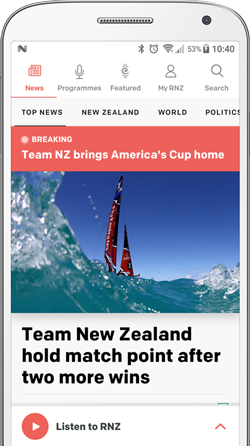
Professor David Krofcheck Photo: Sharon Brettkelly
Years of work on the 'world's greatest science experiment' helped unlock secrets of the universe. Now Auckland nuclear physicist David Krofcheck has been recognised for his work - alongside 13,507 others.
When Professor David Krofcheck got an email congratulating him on winning the Oscar of the science world, he dismissed it as a hoax.
"I thought it was a scam, I thought it was a phishing email," recalls Krofcheck, nuclear physicist at the University of Auckland.
"Yeah right, I've won the 2025 Breakthrough Prize in Fundamental Physics."
Then he started to believe that it was "bizarre enough to be real".
The prize for Krofcheck and his 13,507 colleagues, who have worked to unravel the mysteries of the universe, was presented at an Academy Awards-style ceremony in LA, attended by a who's who of Hollywood and science-dom.
It recognises their years of work on the world's greatest science experiment, the Large Hadron Collider in CERN, near Geneva.
Known as the largest smasher of atoms, the collider reveals information about the fundamental properties of matter, energy and the early universe.
Krofcheck played a key role in the breakthrough discovery of the Higgs boson in 2012 through his work on the Compact Muon Solenoid (CMS) detector, a giant camera that records particle collisions. The CMS detector is one of four research collaborations that the 13,508 Breakthrough Prize-winning scientists worked on.
"It must be like building the pyramid," he jokes. "Pharoah never thanked the slaves for building the pyramid, but this is like the group award for everyone who was able to contribute building the detector, getting it to work right, taking data, analysing the data, publishing the data and finding new and wonderful things, at least for physics."
Krofcheck's office, overlooking Auckland's skyscrapers, is a long way from CERN and his fellow scientists who are scattered around the world. In his office his shelves are stacked with books that tell the story of his lifelong curiosity about the beginnings of the universe after the Big Bang.
He has several Christmas cards from CERN pinned to his wall, and on his desk a small stack of books that he calls his talking point for visitors - the one on top is Alan Turing: The Enigma, the book that inspired the Benedict Cumberbatch film The Imitation Game.
"These books are like conversation starters, things that are important for our field and things that interest me about the origin of the universe, the origin of the technology we use to study nuclear and particle physics."
Sitting on a shelf are mugs from the many laboratories and universities he has attended. One of three rocks on the windowsill is a geode, a gift from his daughter. He has one half and she has the other.
"They fit perfectly together. That's kind of a reminder, when I'm feeling frustrated or sad, I pick up my daughter's geode and know that she has the other half."
As the only scientist in his field in New Zealand, Krofcheck is often called on to talk to the media about Fukushima's nuclear meltdown, North Korea's nuclear weapons and the Russians capturing nuclear power plants in Ukraine, so he is delighted to speak to The Detail about "something pleasant".
When he's at CERN he sits in a control room several kilometres from the Large Hadron Collider.
"We see signals coming from individual detectors. I look on my computer screen and I can see how big the electrical signals are, how fast the electrical signals are coming from these particles.
"We keep watching them to make sure the rate doesn't get too high, so we're collecting so much data that we can't write it fast enough. Or suddenly the signal disappears, which is a disaster, which means somehow the beam has gone off target."
Krofcheck was involved in solving that problem, alongside Professor Phil Butler of the University of Canterbury and his son Professor Anthony Butler of the University of Otago, by ensuring the safe functioning of the US $550 million CMS detector.
By preventing the beam from going off target, data could be safely recorded and that in turn led to the Higgs boson discovery.
His work with the Butlers led to the radiology company MARS Bioimaging, which has received millions of dollars in government funding for development.
Krofcheck says that is the everyday application of the years of research at the Hadron Collider.
But for him it is pure curiosity.
"There's never an end. That's the beauty," he says. "I love seeing the advancing story of more and more things fitting together so you can make predictions as to why stars might behave, for example, or black holes might behave.
"We need this knowledge generated from accelerators on earth but it gives us a grasp of the bigger picture of what's happening in the universe."
Check out how to listen to and follow The Detailhere.
You can also stay up-to-date by liking us on Facebook or following us on Twitter.
Sign up for Ngā Pitopito Kōrero, a daily newsletter curated by our editors and delivered straight to your inbox every weekday.








